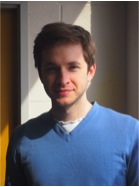Exploring the repeatability of naturally-selected change in a long-term evolution experiment Identifying the molecular architecture of developmental adaptations is a key goal of evolutionary developmental biology. In this study, I focus on transcriptome differences between two selection treatments in Drosophila melanogaster, “Fast” and “Slow”, which have been selected for extreme reproductive and developmental timing phenotypes for over 1000 generations with controlled replication. These selection treatments differ in life cycle length, with “Fast” flies having a shortened life-cycle of 9 days and “Slow” flies having an extended life-cycle of 28 days. To determine the molecular basis of developmental timing differences between the two treatments, I assessed the timing of juvenile life-stage transitions. Independently selected replicate populations within each selection treatment showed remarkably similar patterns of stage-specific response. But not all juvenile stages were equally evolutionarily labile. Surprisingly, not all juvenile stages showed divergence in development time. The developmental stage most impacted by the selection treatment is the third instar stage, which shows an average difference of ~30%. Comprehensive RNA-Seq analysis corroborated our observations with enrichment for body morphogenesis-related pathways and strong conservation of gene expression changes among independently evolved biological replicates. Interestingly, many molecular pathways are similarly regulated among replicates throughout the time-course of development, consistent with convergence at the level of gene expression. I am further dissecting the contributions of cis and trans gene expression adaptations by mapping allele specific expression in Slow/Fast hybrids. 11:30-12:30 BioSci Rm. 3110
|
Archives
February 2021
|

